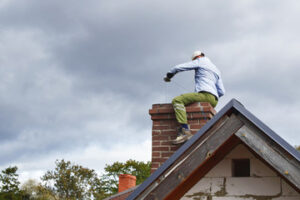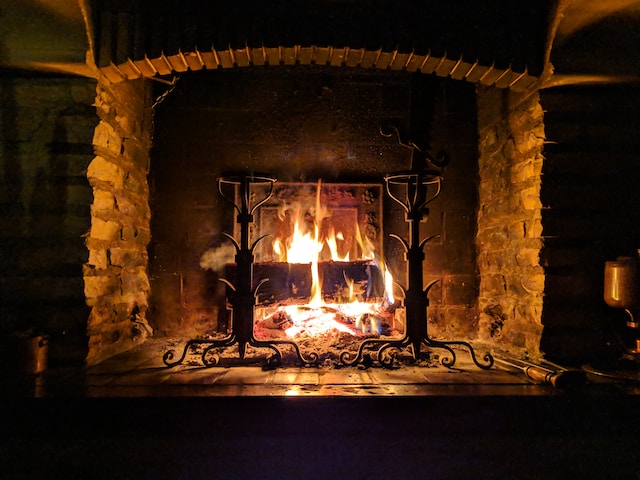Chimney Repair Charleston SC includes various services, from minor fixes to extensive restoration. Costs vary depending on the type of chimney and its condition.

Chimneys are built to be durable but are subject to erosion over time. Regular inspections can catch minor problems before they become serious.
For example, a small crack in a chimney brick can cause water leaks that damage the masonry and weaken the structure. Repairing the crack before it gets worse will save money and prevent moisture from entering the home.
Chimneys can be a beautiful addition to a home’s exterior, but they are also subject to wear and tear from weather and age. When bricks and mortar are damaged, they need to be repaired as soon as possible to avoid serious issues.
Damaged chimneys are not just unsightly; they can be dangerous as well. Cracked bricks and crumbling mortar leave the flue vulnerable to moisture that can lead to mold problems, chimney collapse, and roof damage. Moreover, leaking chimneys can allow harmful gases like carbon monoxide to leak into the living space, posing a health hazard for the family.
Fortunately, there are several ways to improve your chimney’s appearance and functionality at the same time. A few cosmetic solutions can give your chimney a facelift so it is ready for winter, while other repairs can ensure that the structure is safe and sound.
The first thing that needs to be done is to repair any cracked or crumbling bricks. Our chimney experts will evaluate the situation and advise you on the best course of action. The team will make sure that the repaired bricks are sturdy and secure and will not fall off during a fire or heavy winds.
One of the most common chimney problems is water damage from rain and melting snow. This moisture seeps into the bricks and, during the freeze-thaw cycle, can cause them to loosen. This is a process known as spalling and can damage the masonry as well as the metal parts of the chimney. The best way to spot this problem is by looking for a white substance on the outside of the chimney called efflorescence. Efflorescence is caused by salt that leaches out of the water and onto the bricks.
A chimney cap can make your chimney look new again and protect it from rain, debris, and critters. These caps come in a wide variety of colors and styles and can be mounted either to the flue opening itself or over the chimney crown. A professional can determine whether a chimney cap is needed by examining the flue and inspecting the crown.
Your chimney is an unsung hero of household comfort, quietly ensuring warmth, comfort and that unmistakable cozy ambiance. However, your chimney can become a safety hazard if you are not careful with maintenance and inspections.
Regularly scheduled inspections by a certified, professional chimney technician allow you to identify small cracks and deteriorations before they turn into major problems that require expensive repairs. You can also catch the buildup of flammable creosote, which can lead to chimney fires. Chimney fires are not only costly to repair, but they can also be dangerous for your family.
Inspect the exterior of your chimney, looking for cracks, crumbling or missing bricks. Check the crown, flashing and flue cap for signs of deterioration or damage. If you are a do-it-yourselfer, make sure your ladder is stable and positioned correctly before starting work. Always wear protective clothing and a dust mask. Work on a dry day and never work on a wet roof.
A professional chimney inspection is important for identifying leaks in the flue liner, chimney crown and at the mortar joints. In the case of a leaky chimney, a waterproof sealant can be applied to the outside of the chimney to prevent further deterioration. A gap that allows water to enter your home may be closed with a caulking gun and tube of high-heat silicone, butyl or other compatible caulk.
Check the chimney’s location in relation to your home and combustibles to ensure that it is at least 3′ higher than any roof surface at its point of entry into your house and 2′ higher than any other roof surface within 10′. This minimum height requirement is critical for proper ventilation and to protect against chimney collapse.
Chimney liners can be made of clay tile, commonly used before the 1910s, or masonry, which is usually covered by stainless steel. Regardless of the type, flue liners can crack or break as a result of the corrosive action of combustion byproducts and can let flammable creosote into living areas. Annual chimney cleanings remove flammable creosote buildup, promoting optimal ventilation and decreasing the risk of chimney fires.
Chimneys are exposed to various weather elements year-round, including rainwater, melting snow and ice, and hot vapors from the combustion of fossil fuels. While preventative measures like annual sweeps and chimney relining can limit the damage that the elements do to your chimney, some repairs are inevitable. Water is a primary concern, as it can seep into cracks in the brick or stone, causing them to deteriorate or even collapse. The moisture can also cause structural damage to the surrounding areas of your home, as well as mold and other unhealthy conditions.
Chimney leaks are a common problem that can affect the structural integrity of your chimney and the entire house. A professional chimney repair technician can seal the gaps in the brick and mortar with waterproofing, helping to keep rain and melted snow out of your fireplace. Another preventative measure is repointing or tuckpointing. This involves replacing the existing mortar with a durable new mix, protecting the brick from moisture and improving the aesthetics of your chimney.
Another way to protect your chimney from moisture damage is to install a custom-fitted chimney cap and flashing. These pieces keep rain, debris, and animals from entering your chimney, preventing the water from seeping inside and damaging the roof and walls of your home. A leaky chimney may also need a roofline rebuild, in which the mason replaces damaged roofing materials as well.
Whether it’s caused by weather or poor design, a chimney that isn’t functioning properly can lead to health problems and home fires. While chimneys can last more than 100 years, it’s important to have routine maintenance that keeps them safe and working correctly. This includes having your chimney inspected annually to avoid the buildup of creosote and other harmful toxins, as well as investing in targeted fixes such as relining or a chimney replacement.
Investing in chimney repair and maintenance can save you money on repair bills in the long run. Regular maintenance can reduce the need for costly repairs, such as chimney replacement or a chimney rebuild. Having your chimney professionally cleaned and inspected each year will help to minimize the buildup of creosote, reducing the risk of chimney fires.
Chimneys are exposed to extreme weather elements year-round, and the masonry material can begin to degrade over time. This deterioration causes a number of issues, from moisture damage to structural problems with the chimney. If left unchecked, a crack or hole in the chimney can allow smoke and toxic gases like carbon monoxide to enter the home. It’s important to have your chimney inspected regularly by an experienced professional, so that these early warning signs can be identified and repaired as they arise.
Moisture damage is one of the most common problems associated with chimney deterioration, and it’s also one of the easiest to repair. Leaking water may cause wood rot, mildew, and mold problems throughout the home. It can also cause a dangerous leak in the flue liner, which could expose your home to toxic gases and fire hazards.
The mortar that holds the chimney bricks together may begin to deteriorate and crumble. This is commonly caused by exposure to the elements, seismic events, and poor-quality mortar used during construction. If left unchecked, it can lead to structural issues with the chimney itself, and it may be necessary to rebuild the chimney completely.
Another common issue with deteriorating masonry is the formation of gaps and cracks in the chimney structure. These gaps allow water into the chimney through these openings, and they can also make it easier for smoke and heat to escape through unintended locations in the home.
A major gap in the chimney structure occurs at the point where the chimney meets the crown, the concrete cap that covers the top of the chimney. This gap can become more severe if the masonry materials are weakened by moisture, and it may be necessary to rebuild this part of the chimney.
Another issue that’s often overlooked by homeowners is the deterioration of the flue tile lining. This lining is essential for safely conveying combustible gases out of the chimney, and most states’ fire codes require that it be made from a metal material such as aluminum or steel. Many older homes, however, have clay flue liners that can deteriorate and crack over time. This deterioration can also lead to dangerous leaks in the flue, and it’s essential that these leaking tiles be replaced as soon as possible.

